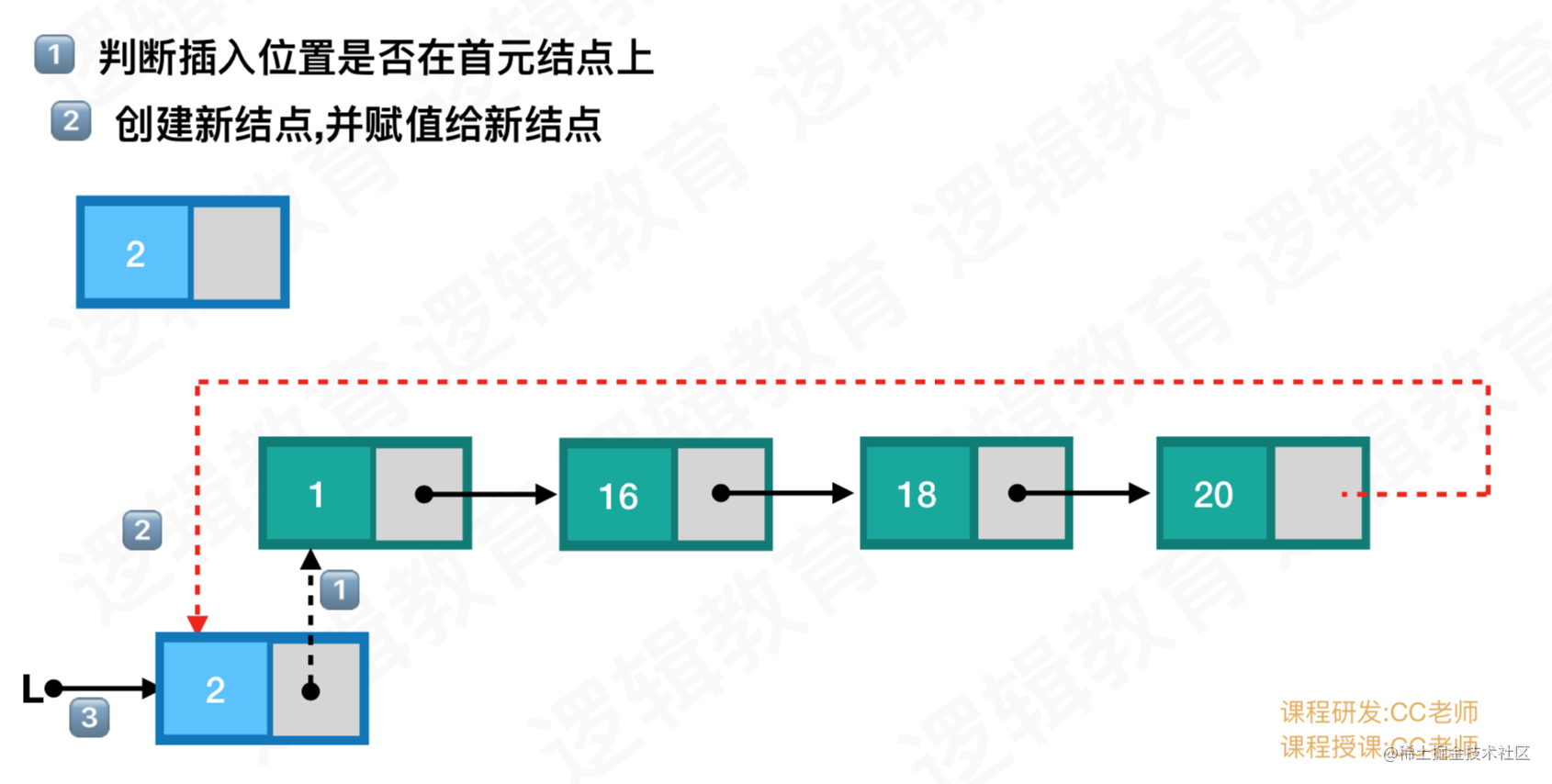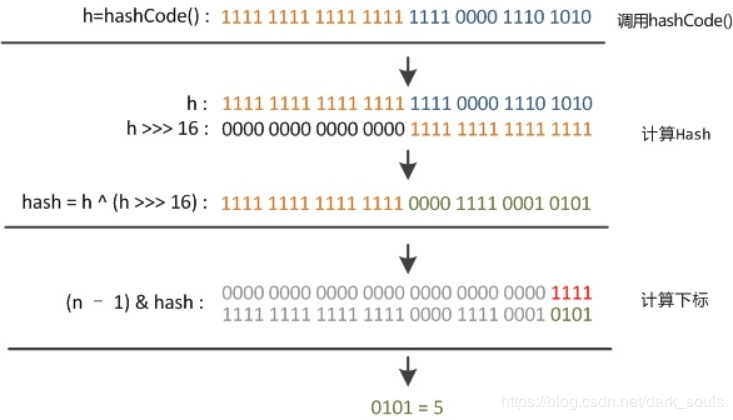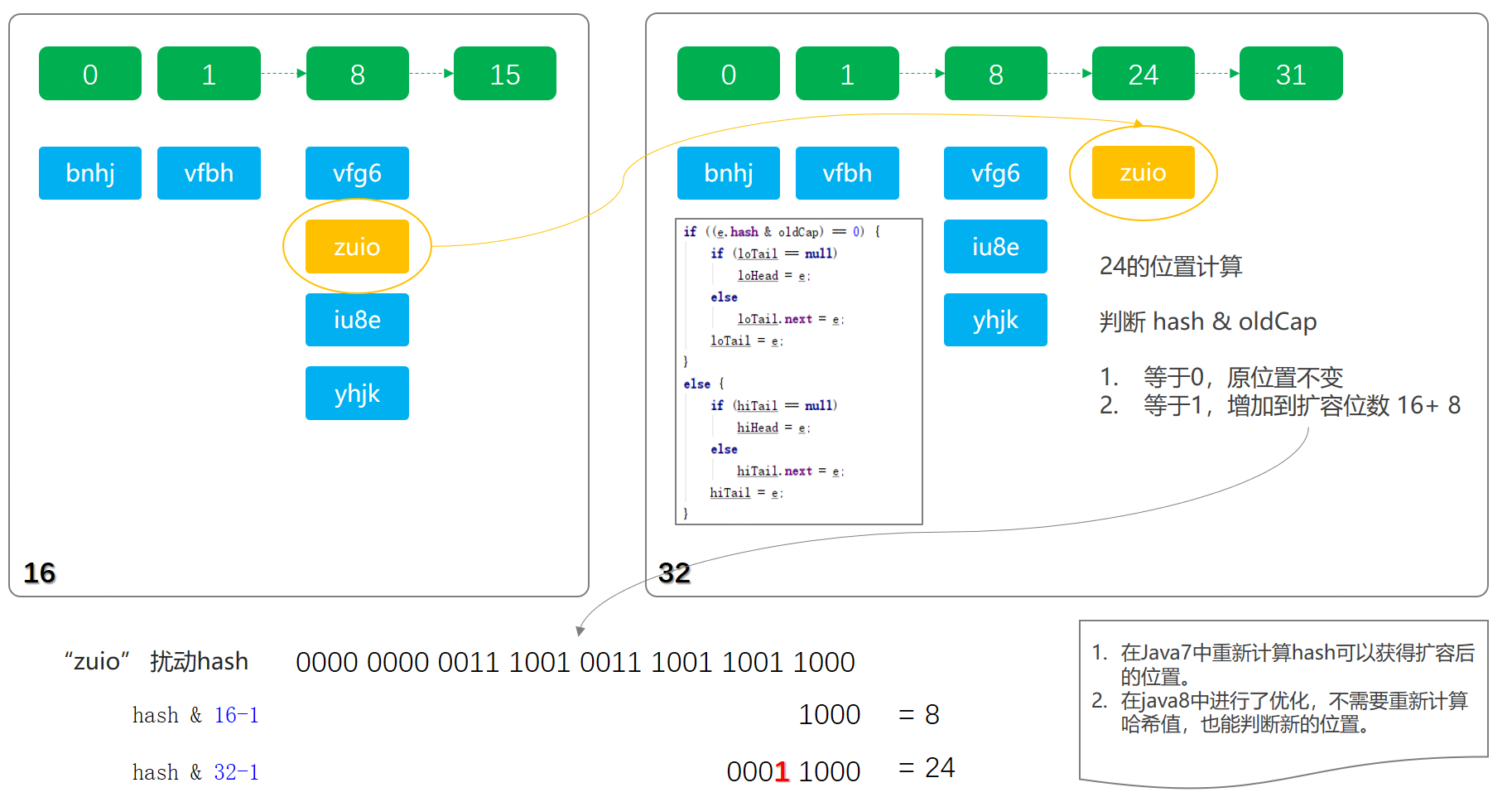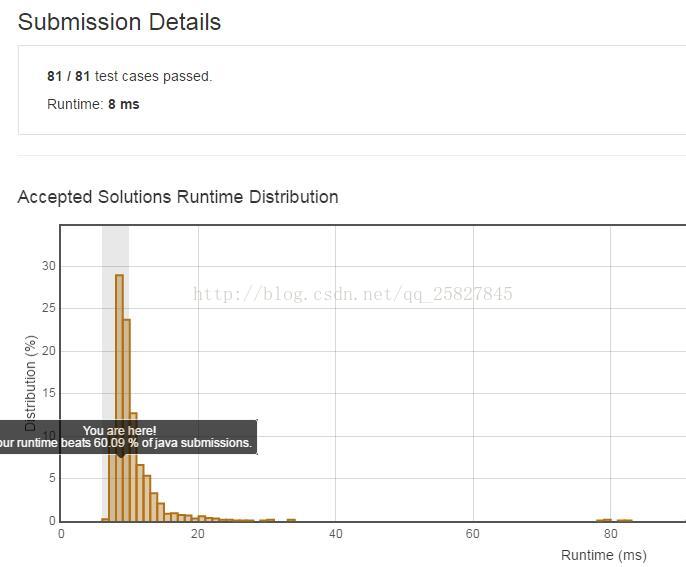深入理解Linux内核之链表 list.h 功能实现原理、接口说明及示例代码
目录
一、双向链表接口函数及相关宏定义分析
0、 结构体
1、(TYPE, ) 宏
2、(ptr, type, ) 宏
3、 宏
4、 宏
5、 函数
6、 和 的区别
7、 函数
8、 函数
9、函数
10. 函数
11、 宏
12、 宏
13、 宏函数
14、 宏函数
15、 宏函数
16、 宏函数的使用示例
17、safe函数
18、 函数
19、其他
二、单向链表接口函数及相关宏定义
三、双向链表综合应用案例-增、减、删、清空操作
最近在学习链表数据结构,开始是想找个库来使用,后来发现linux内核的链表list.h本身就是一个特别好的库,本文着重的分析list.h文件中功能、重要接口,然后结合实际的应用程序来具体分析。
下面的条目都是最常用的 宏 和 函数,一些不常用的宏没有列出,有兴趣的可以直接查看源码。
一、双向链表接口函数及相关宏定义分析 0、 结构体
结构体定义原型如下:
struct list_head {struct list_head *next, *prev;
};这是一个双链表结构,这个结构体定义的相当巧妙,里面并没有 数据元素,只有2个链表指针,分别指向前一个链表点地址和后一个链表点地址,之所以这么定义是为了通用,linux是提供了链表管理接口,并不提供具体的数据结构链表,我们在定义自己的链表的时候,增加一个 指针就可以使用list.h提供的所有接口了。
这个双链表结构,进一步理解,是一个双向循环链表,或者说是双向环形链表,环形链表相比单向链表,优点是头尾相连,这一点对于 遍历 整个链表的 代码实现是很重要也是很方便的,因为最后一个节点的next一定是指向 链表头 head的,而链表头head的prev一定是指向最后一个节点的。链表结构如下:
从上图可知,使用链表,是需要一个head 指针的,这个指针就相当于一根引线,head本身没有任何数据内容,只有两个方向指针prev和next,而自定义的数据结构中只要包含了指针就可以使用 list提供的所有接口函数了,自定义链表结构如下:
typedef struct userType{void *data;struct list_head list
} USR_LIST_TYPE;1、(TYPE, ) 宏
该宏的代码原型如下:
#define offsetof(TYPE, MEMBER) ((size_t) &((TYPE *)0)->MEMBER)//其中 TYPE 为结构体类型,MEMBER为该结构体的 元素,该宏的功能是获取 在该结构体中的 偏移地址。举例来说:
struct test{int a;int b;
};则执行 ( test, a) = 0; ( test, b) = 4;
具体的解释,可以参考文章《 of 分析》
2、(ptr, type, ) 宏
该宏的代码原型如下:
#define container_of(ptr, type, member) ({ \const typeof(((type *)0)->member) * __mptr = (ptr); \(type *)((char *)__mptr - offsetof(type, member)); })//其中 type 是结构体类型, member是结构体中的元素,ptr是指向memeber的指针,是个地址该宏的功能是:通过结构体类型type中的地址(ptr)获取这个结构体的入口地址。 测试代码如下:
/** Get offset of a member variable.** @param[in] type the type of the struct this embedded in* @param[in] member the name of the variable within the struct.*/
#define offsetof(TYPE, MEMBER) ((size_t) &((TYPE *)0)->MEMBER)/** Get the struct for this entry.** @para[in] ptr the list head to take the element from.* @para[in] type the type of the struct this is embedded in.* @para[in] member the name of the variable within the struct.*/
#define container_of(ptr, type, member) ({ \const typeof(((type *)0)->member) * __mptr = (ptr); \(type *)((char *)__mptr - offsetof(type, member)); })typedef struct
{int data1;int data2;
}TEST_TYPE;int main(int argc, char *argv[]) {TEST_TYPE tests = {1,2};int *ptr = &tests.data2;printf("data1 offset:%d\n", offsetof(TEST_TYPE, data1));printf("data2 offset:%d\n", offsetof(TEST_TYPE, data2));printf("ptr:%d\n", ptr);printf("tests addr:%d\n", container_of(ptr, TEST_TYPE, data2));return 0;
}
运行结果如下:
data1 offset:0
data2 offset:4
ptr:6487556
tests addr:6487552
结果验证了所属功能,data2的地址为 ptr也就是 ,而data2的偏移地址是4, 所以 结构体tests的地址是

- 4 =
3、 宏
宏原型如下:
#define LIST_HEAD_INIT(name) {&(name), &(name)}先说功能: 该宏的作用是初始化链表节点,将prev和next指针都指向结构体变量name本身。第一次看到这个宏的时候,我是有些蒙圈的,怎么还有这种操作?这是嘛意思?理解这个宏,我们要有这么几个前提:
① name 的类型一定是 ,所以name中自然是包含2个元素的,分别为 *prev,和 *next.这连个元素是指针,换言说就是“地址值”
② 我们对结构体变量进行赋值或者初始化的时候,可以逐个元素的赋值,也可以通过{ },进行一次性赋值。
有了 上面2个前提,我们对这个宏展开,功能如下:
LIST_HEAD_INIT(name) 替换成 {&(name), &(name)} 其实就是 将 name 本身的地址(&取地址符)分别赋值给 name的两个元素 struct list_head *prev和 *next
所以该宏是不能单独使用的,需要将结果返回给一个 类型的变量。
4、 宏
该宏的原型如下:
#define LIST_HEAD(name) \struct list_head name = LIST_HEAD_INIT(name)通过 前面的分析,可知该宏的功能:定义1个 类型头指针,并且初始化。
5、 函数
该函数原型如下:
static inline void INIT_LIST_HEAD(struct list_head *list)
{list->next = list;list->prev = list;
}该函数是一个内联函数,内联函数一般都是定义在 头文件中的,调用内联函数时,相当于将内联函数嵌入到被调用函数中了,这样就节省了函数调用所需的栈空间,所以执行效率比较高,list.h中的所有接口函数都是内联函数。
该函数的功能:初始化 链表头指针head,将其prev和next元素都 指向list 本身。
6、 和 的区别
第一次接触这两者的时候,还有点蒙,怎么定义了两个一样 功能的东西,后来一琢磨发现还真完全一样,区别是:
宏 有2个动作:定义一个 变量,然后初始化该变量。
只有1个动作:初始化已经定义过的 变量。
所以在使用 函数时,需要先定义好变量,然后再调用该函数,而则不用,一次就 完成了,具体怎么使用,就看 自己的习惯了。
7、 函数
函数原型:
static inline void __list_add(struct list_head *new,struct list_head *prev,struct list_head *next)
{next->prev = new;new->next = next;new->prev = prev;prev->next = new;
}/*** list_add - add a new entry* @new: new entry to be added* @head: list head to add it after---此处就是特制链表头 head** Insert a new entry after the specified head.* This is good for implementing stacks.*/
static inline void list_add(struct list_head *new, struct list_head *head)
{__list_add(new, head, head->next);
}功能:将新链表节点指针 new 添加到 节点 head之后,而且从双链表的设计架构上看,此处的head就是链表头,所以该功能是 插入到 链表头head之后。
8、 函数
函数原型:
/*** list_add_tail - add a new entry* @new: new entry to be added* @head: list head to add it before---此处就是特指链表头。** Insert a new entry before the specified head.* This is useful for implementing queues.*/
static inline void list_add_tail(struct list_head *new, struct list_head *head)
{__list_add(new, head->prev, head);
}其中 函数其实是插入功能,将节点new插入到 head之后。
功能:将 new节点 插入到链表头head节点之前,源码的注释说的很清楚:在head之前 插入一个新的 节点,由于是双向循环链表,也就是一个环形链表,所以这里的 tail 十分形象,就是在链表的 末尾处增加一个新的节点。
9、函数
函数原型:
/** Delete a list entry by making the prev/next entries* point to each other.** This is only for internal list manipulation where we know* the prev/next entries already!*/
static inline void __list_del(struct list_head * prev, struct list_head * next)
{next->prev = prev;prev->next = next;
}static inline void list_del(struct list_head *entry)
{__list_del(entry->prev, entry->next);entry->next = LIST_POISON1;entry->prev = LIST_POISON2;
}功能:删除链表中的一个节点entry,链表节点的删除,其实是删除掉该节点在 链表中的逻辑链接接关系,让该节点的 前一个节点 next直接指向 该节点的后一个节点,而后一个节点的 prev直接指向 该节点的前一个节点。而对于被删除的这个节点指针,并没有进行进行物理删除,而是将其指向了所谓 的 毒指针,这样如果后面再使用这个节点,就可以认为这个节点指针是空的了。我们也可以对进行修改,方便我们的理解。修改如下:
static inline void list_del(dlist_t *node)
{dlist_t *prev = node->prev;dlist_t *next = node->next;prev->next = next;next->prev = prev;
}这个理解起来更容易,不过确实要承认,不如linux中的实现,更加稳定。
10. 函数
函数原型:
/*** list_empty - tests whether a list is empty* @head: the list to test.*/
static inline int list_empty(const struct list_head *head)
{return head->next == head;
}
功能:判断 该链表是否为空,这里判断的逻辑,一定是判断这个链表的 头指针 head的next是否指向它自己,如果是,则说明为空,这里其实可以判断链表中任意一个节点是否为空。
11、 宏
原型:
/*** list_entry - get the struct for this entry* @ptr: the &struct list_head pointer.* @type: the type of the struct this is embedded in.* @member: the name of the list_struct within the struct.*/
#define list_entry(ptr, type, member) \container_of(ptr, type, member)功能:获取链表中某个 节点的地址,这里调用了 宏函数,即通过结构体元素 的 地址计算出 整个结构体的起始地址,这个函数很重要,主要用于链表的遍历,通过链表中某个节点的某个元素的地址,计算出这个 节点的地址。
12、 宏
原型:
/*** list_first_entry - get the first element from a list* @ptr: the list head to take the element from.* @type: the type of the struct this is embedded in.* @member: the name of the list_struct within the struct.** Note, that list is expected to be not empty.*/
#define list_first_entry(ptr, type, member) \list_entry((ptr)->next, type, member)功能:如字面意思,获取链表中第一个元素(节点)的地址,这里已经限定了,一定是 链表的第一个节点的地址,注意,不是head的地址,链表的head中并不会有内容,head的下一个节点才是有效的数据节点,该函数也是 获取第一个first节点的入口地址,但是ptr一般是head,因为使用的时候是ptr->next。
13、 宏函数
函数 原型:
/*** list_for_each - iterate over a list* @pos: the &struct list_head to use as a loop cursor.* @head: the head for your list.*/
#define list_for_each(pos, head) \for (pos = (head)->next; prefetch(pos->next), pos != (head); \pos = pos->next)功能:正如注释里所说:(迭代、重复),从头遍历整个链表。这里特别注意,pos只是一个临时的变量,该宏函数 一定是从链表的头部head 遍历整个链表,而 定义为 void (void *a (())) { },这个太高级了,我们可以简单的想,一定是判断 pos不是 NULL,只要是 pos->next为空,就说明到了 链表的结尾了。对于一些 工程案例中,没有使用, 也是可以的,直接判断pos与head是否相等,因为该链表结构为双向循环的。所以如果自己写代码,不想实现,完全可以删掉, 如下所示:
#define list_for_each(pos, head) \for (pos = (head)->next; pos != (head); pos = pos->next)注:上面的代码中只有 for(xxx;xxx;xxx),并没有执行的内容,所以真正用的时候,用的 方式如下:
list_for_each(pos, head){/* 循环执行代码 */
}14、 宏函数
原型:
/*** list_for_each_safe - iterate over a list safe against removal of list entry* @pos: the &struct list_head to use as a loop cursor.* @n: another &struct list_head to use as temporary storage* @head: the head for your list.*/
#define list_for_each_safe(pos, n, head) \for (pos = (head)->next, n = pos->next; pos != (head); \pos = n, n = pos->next)功能:也是遍历链表函数,只不过如果我们在遍历的过程中涉及到节点的删除操作,则需要使用这个函数,从这个函数中也可以发现,有了一个中间节点 n 作为临时存储区,这也契合了 函数名中 safe的含义,更加安全。
15、 宏函数
原型:
/*** list_for_each_entry - iterate over list of given type* @pos: the type * to use as a loop cursor.//用作循环遍历的 游标指针(临时指针)* @head: the head for your list. //我们自己的链表 头 head* @member: the name of the list_struct within the struct. // 链表结构体的 元素,一般就是* 那个struct list_head 的指针元素*/
#define list_for_each_entry(pos, head, member) \for (pos = list_entry((head)->next, typeof(*pos), member); \&pos->member != (head); \pos = list_entry(pos->member.next, typeof(*pos), member))功能: 通过给定类型() 遍历链表,通常用于遍历查找某个节点,这个给定类型就是我们自定义的链表结构中的 list 元素,这个函数对于遍历链表,尤其是自定义数据链表结构的遍历,非常方便。
我们来分析一下这个for循环体的实现原理:
①
pos = list_entry((head)->next, typeof(*pos), member);其中:(head)->next : 链表头head的next元素,指向了整个链表的 第一个含数据的有效 节点。typeof(*pos) : 获取 *pos 的数据类型。这个一般是我们自定义的数据结构。member : 我们自定义的数据结构 member元素,一般就是那个 struct head_list 类型元素list_entry : 通过结构体中的 member 的地址计算出该链表节点的地址。所以该条命令是:获取 链表节点地址,然后赋值给 pos②
pos->member != (head); //判断该节点 是否是 链表头节点head,这是遍历for循环中的条件判断部分,//由于链表是双链表循环结构,如果pos->member == head, 说明已经遍历到最//后,或者该链表为空③
pos = list_entry(pos->member.next, typeof(*pos), member)) 这里的方式跟①中一样,只不过取的 pos->member.next,也就是更新pos为当前节点的下一个节点,
到这里我们第一次感受到了struct list_head 数据结构的设计巧妙,可以很方便(尽管理解起来难)
的找到任意一个节点。16、 宏函数的使用示例
前面讲解了 宏函数功能(遍历查找)以及实现原理,但是怎么用,还是会有点抽象,下面我们来用代码举例:
typedef struct usrList
{int index;int data;struct list_head list;
} USR_LIST_TYPE;int main(int argc, char *argv[]) {USR_LIST_TYPE msg, *pmsg;LIST_HEAD(msg_head);int *ptr = &msg.data;int i;/* insert the 10 msgs */for(i = 0; i < 10; i++){pmsg = (USR_LIST_TYPE *)malloc(sizeof(USR_LIST_TYPE));pmsg->index = i + 1;pmsg->data = (i + 1)*10;list_add_tail(&pmsg->list, &msg_head);}/* 根据list 遍历 整个链表,并打印信息 */list_for_each_entry(pmsg, &msg_head, list){printf("msg index:%d data:%d\n", pmsg->index, pmsg->data);}return 0;
}
运行结果如下:
msg index:1 data:10
msg index:2 data:20
msg index:3 data:30
msg index:4 data:40
msg index:5 data:50
msg index:6 data:60
msg index:7 data:70
msg index:8 data:80
msg index:9 data:90
msg index:10 data:10017、safe函数
原型:
/*** list_for_each_entry_safe - iterate over list of given type safe against removal of list entry* @pos: the type * to use as a loop cursor.* @n: another type * to use as temporary storage* @head: the head for your list.* @member: the name of the list_struct within the struct.*/
#define list_for_each_entry_safe(pos, n, head, member) \for (pos = list_entry((head)->next, typeof(*pos), member), \n = list_entry(pos->member.next, typeof(*pos), member); \&pos->member != (head); \pos = n, n = list_entry(n->member.next, typeof(*n), member))功能:的安全版,当遍历过程中涉及到 删除节点的时候,使用该宏函数。
18、 函数
原型:
/*** list_for_each_entry_reverse - iterate backwards over list of given type.* @pos: the type * to use as a loop cursor.* @head: the head for your list.* @member: the name of the list_struct within the struct.*/
#define list_for_each_entry_reverse(pos, head, member) \for (pos = list_entry((head)->prev, typeof(*pos), member); \&pos->member != (head); \pos = list_entry(pos->member.prev, typeof(*pos), member))功能:反向遍历整个链表。
19、其他
双向链表的其他接口参考源码list.h
二、单向链表接口函数及相关宏定义
通过对双向链表的学习,我们了解了链表的相关操作,双向链表功能比较全,但是也有一点点缺点,就是每个链表节点都包含2个 方向指针,所以如果可以定义一种单向链表,对于内存来讲,不仅能够节省内存,而且对于一些简单的结构,遍历的效率也会更高,,这里参考阿里云IOT- C SDK中单向链表的 实现方式,就不一一的解释了,毕竟能够理解双向链表,再去看单向链表,就很简单了。该链表结构是单向不循环数据结构,如下图所示:
代码如下:
/* for single link list */
typedef struct slist_s {struct slist_s *next;
} slist_t; static inline void slist_add(slist_t *node, slist_t *head)
{node->next = head->next;head->next = node;
}static inline void slist_add_tail(slist_t *node, slist_t *head)
{while (head->next) {head = head->next;}slist_add(node, head);
}static inline void slist_del(slist_t *node, slist_t *head)
{while (head->next) {if (head->next == node) {head->next = node->next;break;}head = head->next;}
}static inline int slist_empty(const slist_t *head)
{return !head->next;
}static inline void slist_init(slist_t *head)
{head->next = 0;
}/*
* Iterate over list of given type.
*
* @param[in] queue he head for your list.
* @param[in] node the type * to use as a loop cursor.
* @param[in] type the type of the struct this is embedded in.
* @param[in] member the name of the slist_t within the struct.
*/
#define slist_for_each_entry(queue, node, type, member) \for (node = container_of((queue)->next, type, member); \&node->member; \node = container_of(node->member.next, type, member))/** Iterate over list of given type safe against removal of list entry.** @param[in] queue the head for your list.* @param[in] tmp the type * to use as a temp.* @param[in] node the type * to use as a loop cursor.* @param[in] type the type of the struct this is embedded in.* @param[in] member the name of the slist_t within the struct.*/
#define slist_for_each_entry_safe(queue, tmp, node, type, member) \for (node = container_of((queue)->next, type, member), \tmp = (queue)->next ? (queue)->next->next : NULL; \&node->member; \node = container_of(tmp, type, member), tmp = tmp ? tmp->next : tmp)/** Initialise the list.** @param[in] name the list to be initialized.*/
#define SLIST_HEAD_INIT(name) {0}/** Initialise the list.** @param[in] name the list to be initialized.*/
#define SLIST_HEAD(name) \slist_t name = SLIST_HEAD_INIT(name)/** Get the struct for this entry.* @param[in] addr the list head to take the element from.* @param[in] type the type of the struct this is embedded in.* @param[in] member the name of the slist_t within the struct.*/
#define slist_entry(addr, type, member) ( \addr ? (type *)((long)addr - offsetof(type, member)) : (type *)addr \)/*
* Get the first element from a list.
*
* @param[in] ptr the list head to take the element from.
* @param[in] type the type of the struct this is embedded in.
* @param[in] member the name of the slist_t within the struct.
*/
#define slist_first_entry(ptr, type, member) \slist_entry((ptr)->next, type, member)/** Get the list length.** @param[in] queue the head for your list.*/
static inline int slist_entry_number(slist_t *queue)
{int num;slist_t *cur = queue;for (num = 0; cur->next; cur = cur->next, num++);return num;
}三、双向链表综合应用案例-增、减、删、清空操作
示例代码如下:
typedef struct usrList
{int index;int data;struct list_head list;
} USR_LIST_TYPE;int main(int argc, char *argv[]) {USR_LIST_TYPE msg, *pmsg, *pos,*n;//struct list_head *pos, *n; //用于遍历 临时用LIST_HEAD(msg_head);int *ptr = &msg.data;int i;/* insert the 10 msgs 插入10个节点 */printf("*** now,we will insert 10 msgs into list ******\n");for(i = 0; i < 10; i++){pmsg = (USR_LIST_TYPE *)malloc(sizeof(USR_LIST_TYPE));pmsg->index = i + 1;pmsg->data = (i + 1)*10;list_add_tail(&pmsg->list, &msg_head);}printf("*** print the list ****************************\n");list_for_each_entry(pmsg, &msg_head, list){printf("msg index:%d data:%d\n", pmsg->index, pmsg->data);}/* modify the index:5 node,and data is 55, 修改某个节点*/printf("*** now,we will modify the index=5 msg ********\n");list_for_each_entry(pmsg, &msg_head, list){if(pmsg->index == 5){pmsg->data = 55;break;}}//print all the listprintf("*** print the list ****************************\n");list_for_each_entry(pmsg, &msg_head, list){printf("msg index:%d data:%d\n", pmsg->index, pmsg->data);}//删除某个节点printf("*** now,we will delete the index=5 msg ********\n");list_for_each_entry_safe(pos,n, &msg_head, list){if(pos->index == 5){list_del(&(pos->list));free(pos);break;}}printf("*** print the list ****************************\n");list_for_each_entry(pmsg, &msg_head, list){printf("msg index:%d data:%d\n", pmsg->index, pmsg->data);}/* 使用list_for_each_safe 进行删除节点操作list_for_each_safe(pos, n, &msg_head){pmsg = list_entry(pos, USR_LIST_TYPE, list); //获取节点指针if(pmsg->index == 5){list_del(pos);free(pmsg); //务必释放该节点所占的物理内存break;}}printf("*** print the list ****************************\n");list_for_each_entry(pmsg, &msg_head, list){printf("msg index:%d data:%d\n", pmsg->index, pmsg->data);}*///删除全部节点printf("*** now,we will delete all msg ********\n");list_for_each_entry_safe(pos, n, &msg_head, list){list_del(&(pos->list));free(pos);}//判断链表是否为空if(list_empty(&msg_head))printf("the list is empty.\n");else printf("the list is not empty.\n");return 0;
}
运行结果如下:
*** now,we will insert 10 msgs into list ******
*** print the list ****************************
msg index:1 data:10
msg index:2 data:20
msg index:3 data:30
msg index:4 data:40
msg index:5 data:50
msg index:6 data:60
msg index:7 data:70
msg index:8 data:80
msg index:9 data:90
msg index:10 data:100
*** now,we will modify the index=5 msg ********
*** print the list ****************************
msg index:1 data:10
msg index:2 data:20
msg index:3 data:30
msg index:4 data:40
msg index:5 data:55
msg index:6 data:60
msg index:7 data:70
msg index:8 data:80
msg index:9 data:90
msg index:10 data:100
*** now,we will delete the index=5 msg ********
*** print the list ****************************
msg index:1 data:10
msg index:2 data:20
msg index:3 data:30
msg index:4 data:40
msg index:6 data:60
msg index:7 data:70
msg index:8 data:80
msg index:9 data:90
msg index:10 data:100
*** now,we will delete all msg ********
Now,the list is empty.










